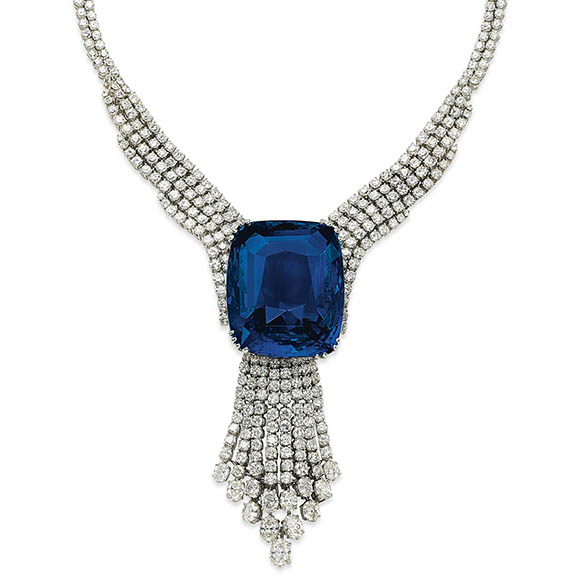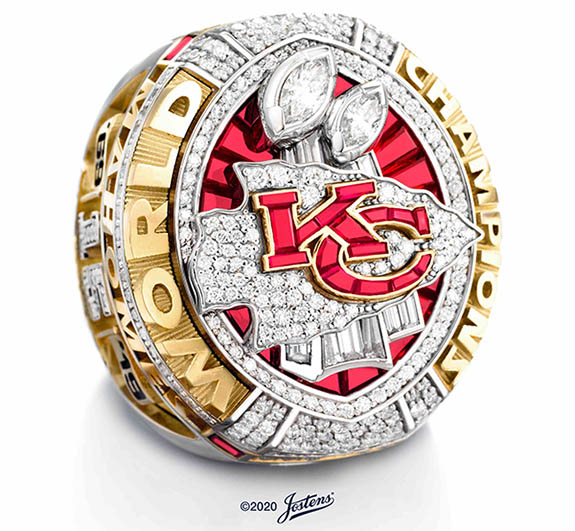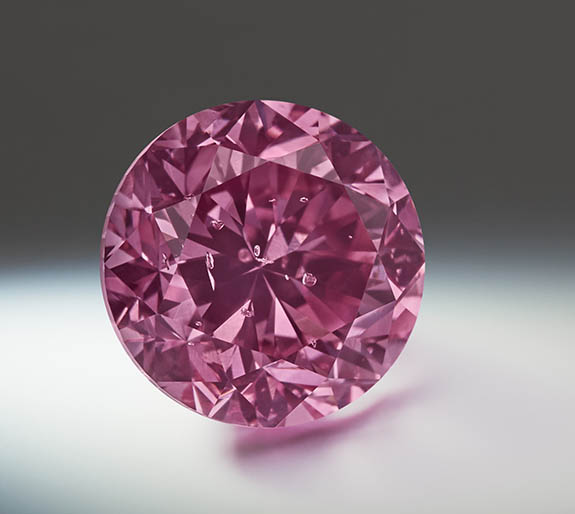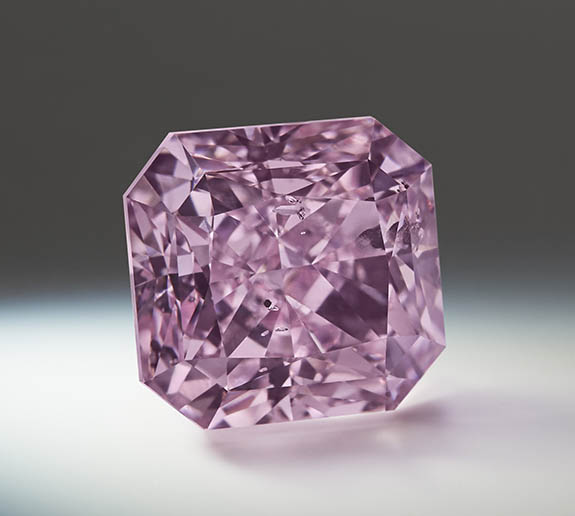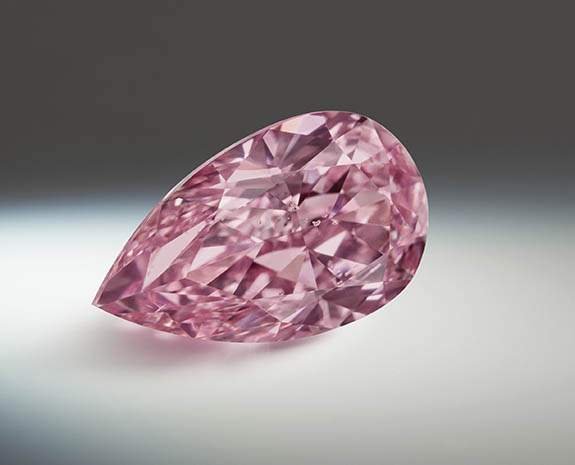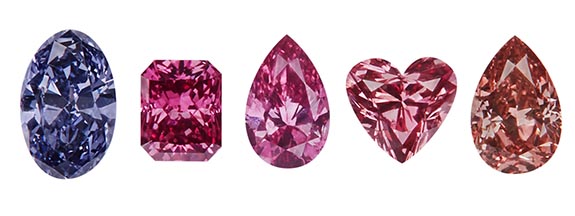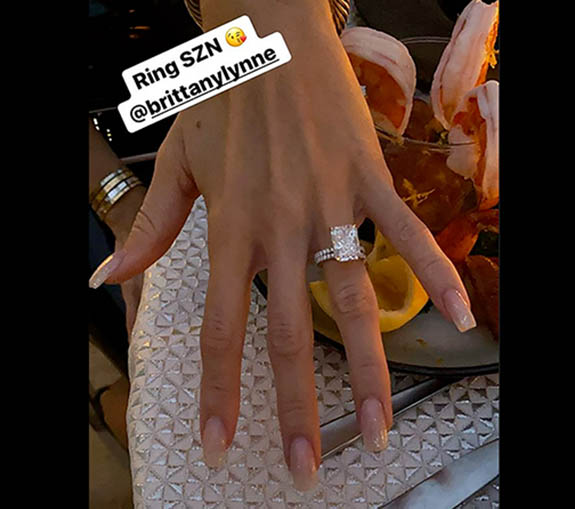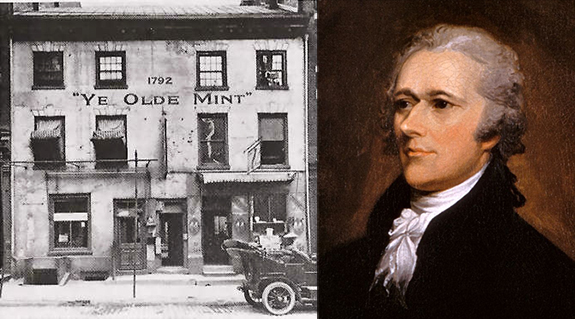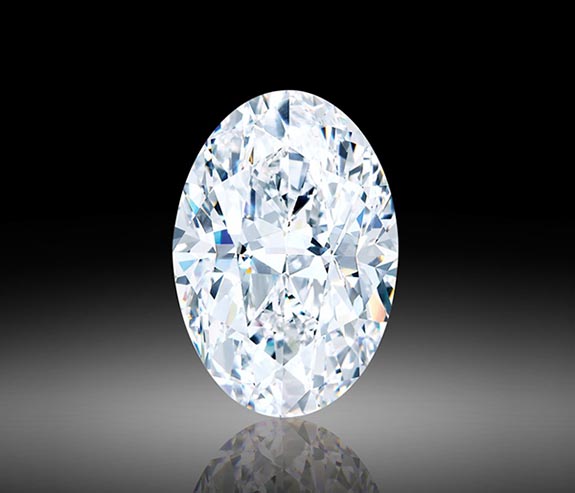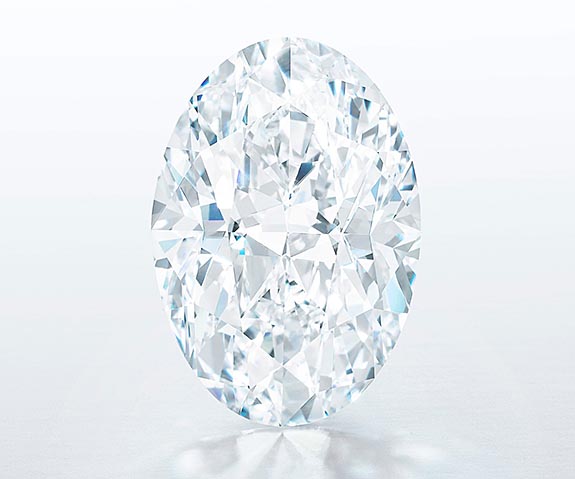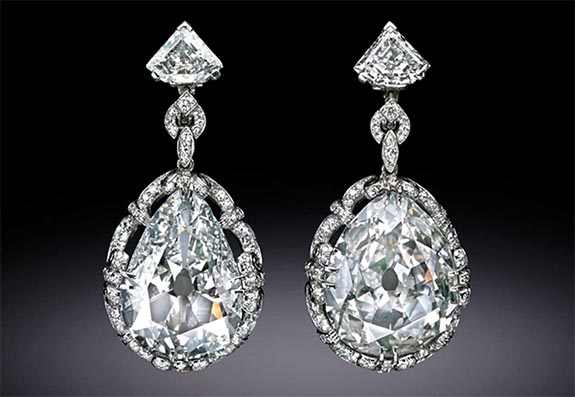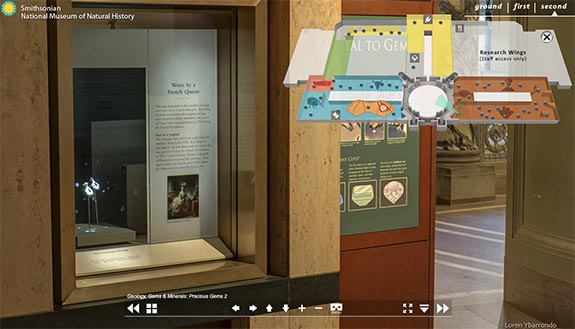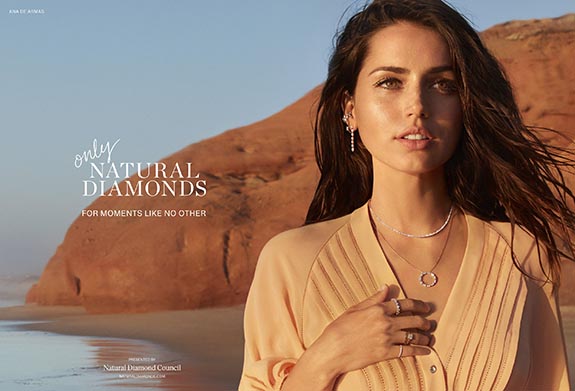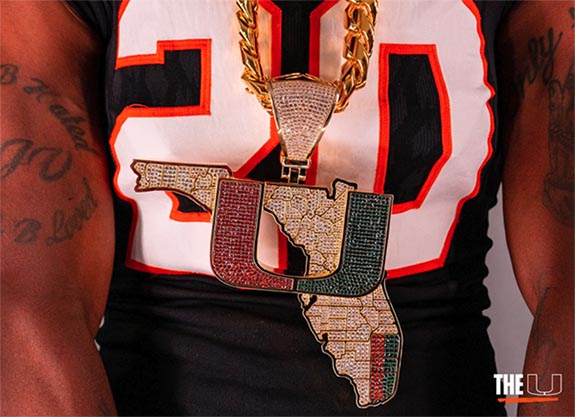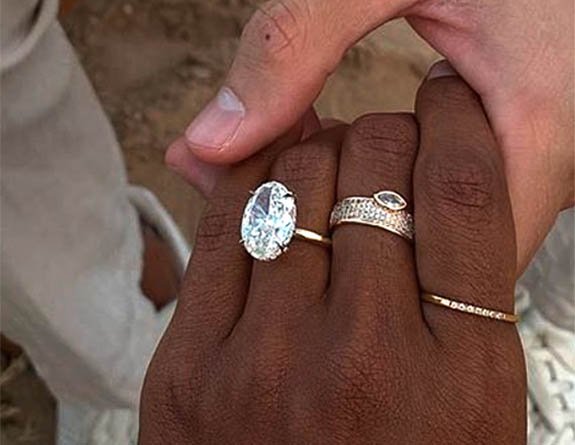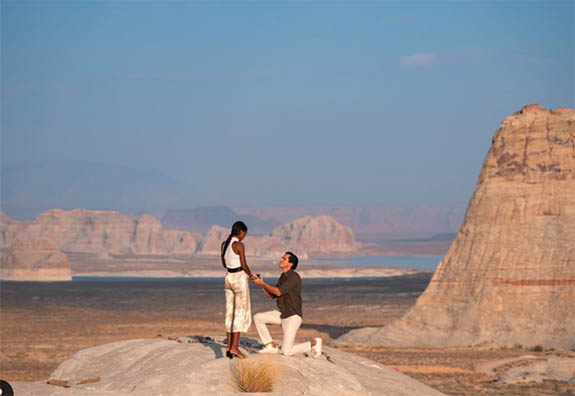September 1st, 2020
As the world’s leading diamond producer, Russia's Alrosa Group gets to see a lot of rough stones — from the ordinary to the extraordinary.

Among the 40 million carats that are sorted in an average year, a handful of exceptional diamond oddities are extracted and preserved in the company's collection of rare finds. They are also photographed and chronicled on the company's Instagram page using the hashtag "uniquediamondsalrosa."
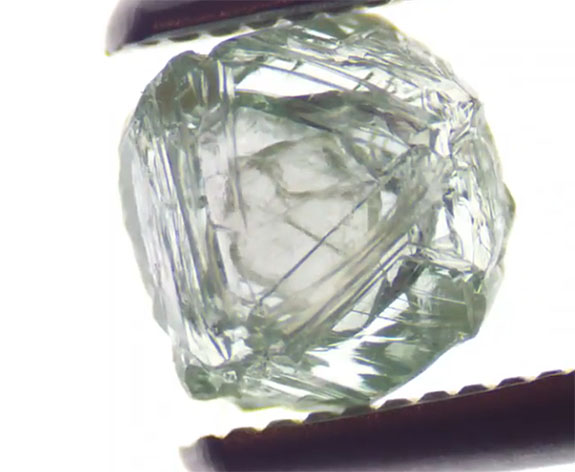
One of those oddities was revealed to the world exactly a year ago. Instagram followers were invited to view to a video that seemed to show a tiny rough diamond moving freely in the cavity of a larger one. The caption read, “A diamond in a diamond? We couldn’t help but share this very special find with you.”
At the time, Alrosa wasn’t quite sure what to make of the phenomenon. Nobody at the mining company had ever seen anything like it. Five weeks later, Alrosa scientists confirmed that both the host and smaller crystal were diamonds. They named the double-diamond “Matryoshka” because its strange configuration was reminiscent of the popular Russian nesting dolls.
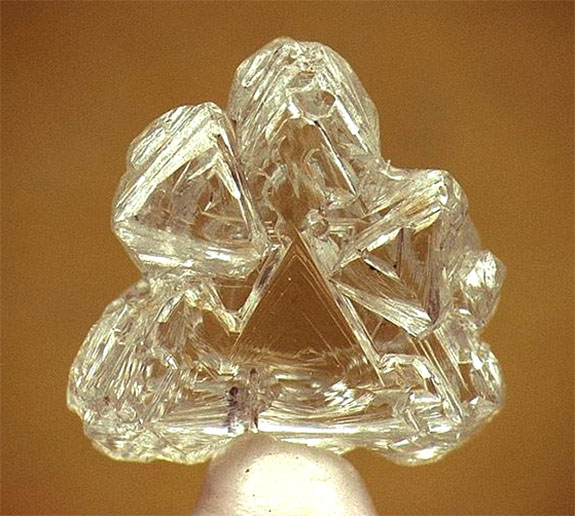
Just two weeks ago, Alrosa posted a pic and short video of its most recent oddity: a diamond composed of merged crystals.
Alrosa's asked its Instagram followers, "How many crystals do you see?" We see six, but there may be more.

Earlier in the year, during the onset of the COVID-19 virus, the mining company lifted the spirits of its followers with the post of a diamond with a pyrope inclusion.
Read the caption, "A pyrope heart of a diamond. During this hard time, we are strong while we are compassionate and caring."
The company explained that the unusual diamond was mined in the Arkhangelsk region by Alrosa's subsidiary, Severalmaz.
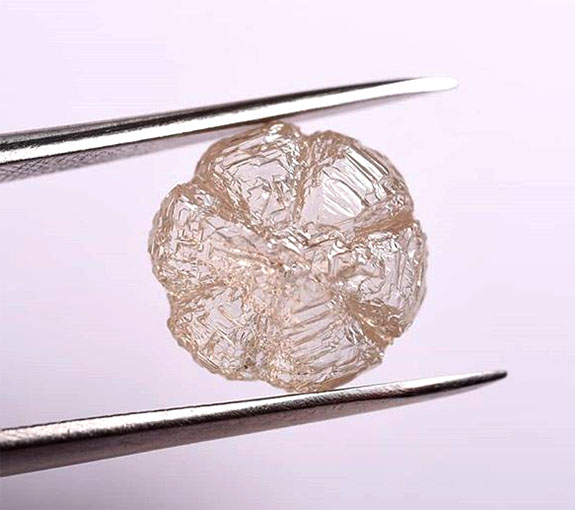
During holiday season, Alrosa showed off its snowflake diamond. In the caption, the company explained that the gemological name for the crystal formation is a cyclic twin. "But we prefer to call it a snowflake," the company wrote.
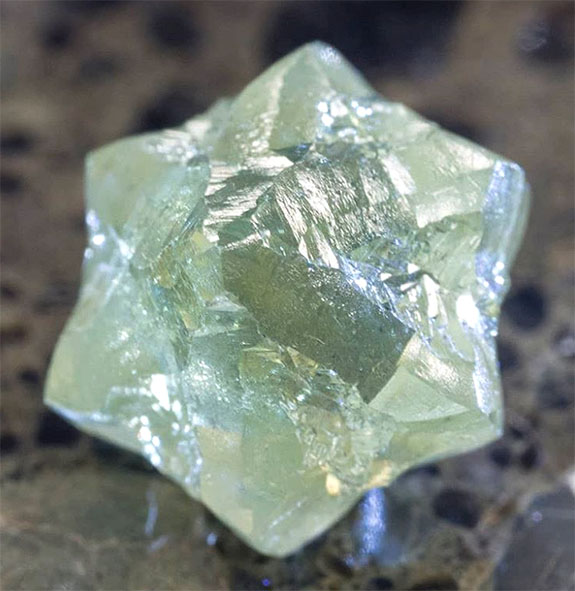
Also in December, in the lead-up to Hanukkah, Alrosa revealed a diamond that looked like the Star of David. Wrote Alrosa, "No filters! No cutting! Just creative nature. This greenish yellowish "Star of David" was mined in late 2018 by Alrosa's subsidiary Severalmaz in [the] Arkhangelsk region."
Also a cyclic twin, the diamond reflects the inter-growth of octahedral macles (triangular-shaped twinned crystals) that are oriented in opposite directions.
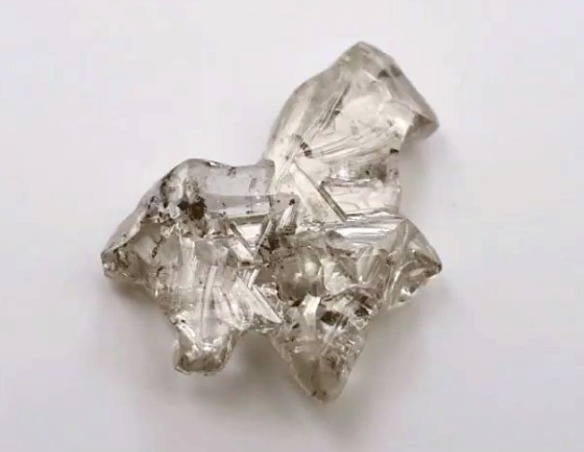
Just before Thanksgiving, the company had some fun with a strange rough diamond that resembled a galloping horse.
Alrosa's social media team penned, "Do we have a rich imagination or really crazy rough diamonds? Honestly, we expected to find a turkey-shape rough on the eve of Thanksgiving. But no. Instead, we are happy to have a pony diamond!"
Alrosa accounts for nearly one-third of global rough diamond production. The company manages mines in Russia’s Yakutia and Arkhangelsk regions, as well as Africa.
Credits: Images and video captures via Instagram.com/alrosadiamonds.

Among the 40 million carats that are sorted in an average year, a handful of exceptional diamond oddities are extracted and preserved in the company's collection of rare finds. They are also photographed and chronicled on the company's Instagram page using the hashtag "uniquediamondsalrosa."

One of those oddities was revealed to the world exactly a year ago. Instagram followers were invited to view to a video that seemed to show a tiny rough diamond moving freely in the cavity of a larger one. The caption read, “A diamond in a diamond? We couldn’t help but share this very special find with you.”
At the time, Alrosa wasn’t quite sure what to make of the phenomenon. Nobody at the mining company had ever seen anything like it. Five weeks later, Alrosa scientists confirmed that both the host and smaller crystal were diamonds. They named the double-diamond “Matryoshka” because its strange configuration was reminiscent of the popular Russian nesting dolls.

Just two weeks ago, Alrosa posted a pic and short video of its most recent oddity: a diamond composed of merged crystals.
Alrosa's asked its Instagram followers, "How many crystals do you see?" We see six, but there may be more.

Earlier in the year, during the onset of the COVID-19 virus, the mining company lifted the spirits of its followers with the post of a diamond with a pyrope inclusion.
Read the caption, "A pyrope heart of a diamond. During this hard time, we are strong while we are compassionate and caring."
The company explained that the unusual diamond was mined in the Arkhangelsk region by Alrosa's subsidiary, Severalmaz.

During holiday season, Alrosa showed off its snowflake diamond. In the caption, the company explained that the gemological name for the crystal formation is a cyclic twin. "But we prefer to call it a snowflake," the company wrote.

Also in December, in the lead-up to Hanukkah, Alrosa revealed a diamond that looked like the Star of David. Wrote Alrosa, "No filters! No cutting! Just creative nature. This greenish yellowish "Star of David" was mined in late 2018 by Alrosa's subsidiary Severalmaz in [the] Arkhangelsk region."
Also a cyclic twin, the diamond reflects the inter-growth of octahedral macles (triangular-shaped twinned crystals) that are oriented in opposite directions.

Just before Thanksgiving, the company had some fun with a strange rough diamond that resembled a galloping horse.
Alrosa's social media team penned, "Do we have a rich imagination or really crazy rough diamonds? Honestly, we expected to find a turkey-shape rough on the eve of Thanksgiving. But no. Instead, we are happy to have a pony diamond!"
Alrosa accounts for nearly one-third of global rough diamond production. The company manages mines in Russia’s Yakutia and Arkhangelsk regions, as well as Africa.
Credits: Images and video captures via Instagram.com/alrosadiamonds.




